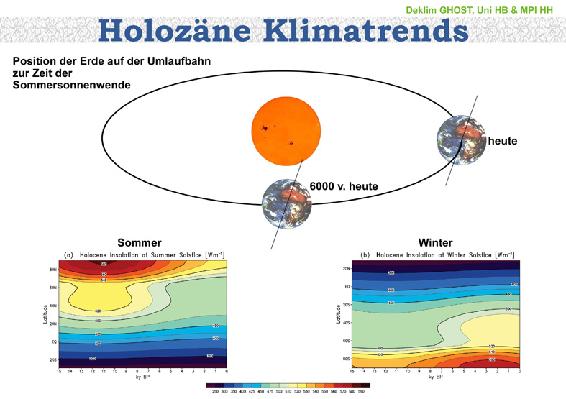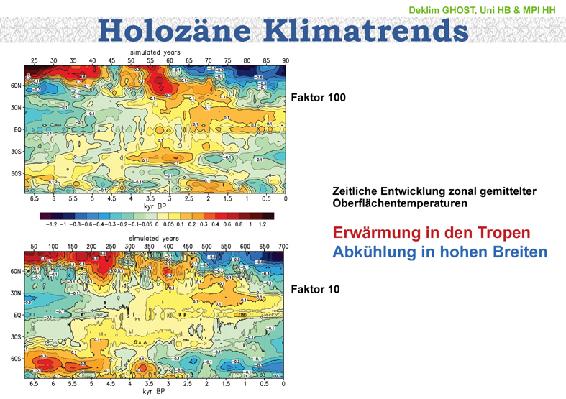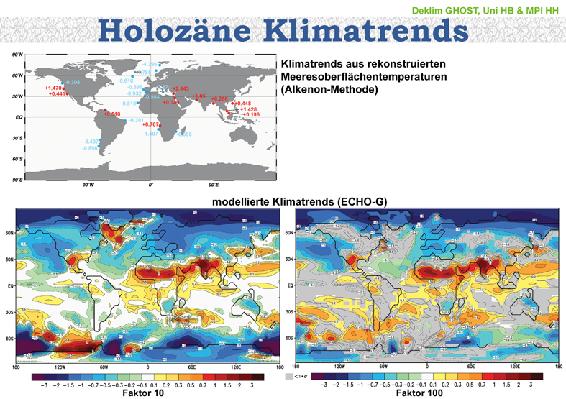Lorenz, S., and Lohmann, G., 2004: Acceleration technique for Milankovitch type forcing in a coupled atmosphere-ocean circulation model: method and application for the Holocene. Climate Dyn. doi:10.1007/s00382-004-0469-y
A method is introduced which allows the calculation of long-term climate
trends within the framework of a coupled atmosphere-ocean circulation
model.
The change in the seasonal cycle of incident solar radiation induced by
varying orbital parameters has
been accelerated by factors of 10 and 100 in order to allow transient
simulations over the period from the mid-Holocene until today, covering the
last 7000 years.
In contrast to conventional time-slice experiments, this approach is
not restricted to equilibrium simulations and is capable
to utilise all available data for validation.
We find that opposing Holocene climate trends in tropics and
extra-tropics are a robust feature in our experiments.
Results from the transient simulations of the mid-Holocene
climate at 6000 years before present show considerable differences to
atmosphere-alone model simulations, in particular at high latitudes,
attributed to atmosphere-ocean-sea ice effects.
The simulations were extended for the time period 1800 to 2000 AD,
where, in contrast to the Holocene climate, increased concentrations of
greenhouse gases in the atmosphere provide for the strongest driving
mechanism.
The experiments reveal that a Northern Hemisphere cooling trend over the
Holocene is completely cancelled by the warming trend during the last
century, which brings the recent global warming into a long-term context.
pdf file available
 (1) (1)
 (2) (2)
 (3) (3)
 (4) (4)
|
 (1)
(1)
 (2)
(2)
 (3)
(3)
 (4)
(4)
 (1)
(1)
 (2)
(2)
 (3)
(3)
 (4)
(4)